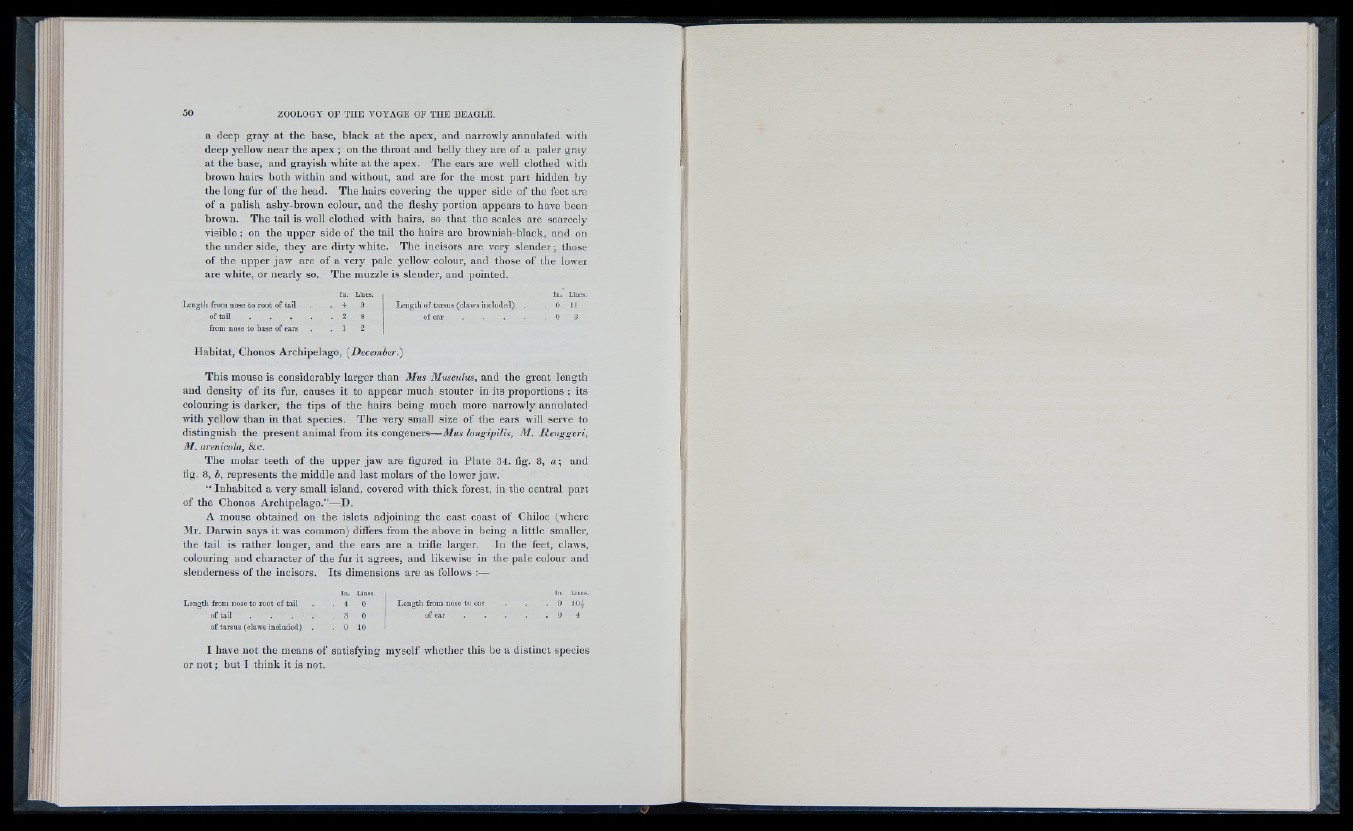
a deep gray at the base, black at the apex, and narrowly annulated with
deep yellow near the apex ; on the throat and belly they arc of a paler gray
at the base, and grayish white at the apex. The ears are well clothed with
brown hairs both within and without, and are for the most part hidden by
the long fur of the head. The liairs covering the upper side of the feet are
of a palish ashy-brown colour, and the fleshy portion appears to have been
brown. The tail is well clothed with hairs, so that the scales are scarcely
visible; on the upper side of the tail the hairs are brownish-black, and on
the under side, they are dirty white. The incisors are very slender; those
of the upper jaw are of a very pale yellow colour, and those of the lower
are white, or nearly so. The muzzle is slender, and pointed.
Lengtli from nose to root of tail
of tail . . . .
from nose to base of ears
In. Lines, •i 0 Length of tarsus (claws included)
of ear . . .
In. Lines.
0 11
0 3
Habitat, Chonos Archipelago, (JDecemher.)
This mouse is considerably larger than 3Ius 3Iusculus, and the great length
and density of its fur, causes it to appear much stouter in its proportions ; its
colouring is darker, the tips of the hairs being much more narrowly annulated
with yellow than in that species. The very small size of the ears will serve to
distinguish the present animal from its congeners—Mus longipilis, M. Renggeri,
31. arenicola, &c.
The molar teeth of the upper jaw are figured in Plate 34. fig. 8, a; and
fig. 8, h, represents the middle and last molars of the lower jaw.
“ Inhabited a very small island, covered with thick forest, in the central part
of the Chonos Archipelago.”—D.
A mouse obtained on the islets adjoining the east coast of Chiloe (where
Mr. Darwin says it was common) differs from the above in being a little smaller,
the tail is rather longer, and the ears are a trifle larger. In the feet, claws,
colouring and character of the fur it agrees, and likewise in the pale colour and
slenderness of the incisors. Its dimensions are as follows :—
Lengtli from nose to root of tail
of tail . . . .
of tarsus (claws included) .
[n. Lines. 4 0
3 0
0 10
Length from nose to ear
of ear
In. Lines. 0 104
I have not the means of satisfying myself whether this be a distinct species
or not; but I think it is not.